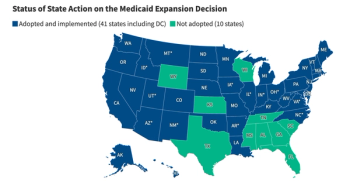
|Slideshows|March 12, 2019
16 Ways to Hire Better Employees
Author(s)Tracey Walker
Experts share 16 tips for acquiring top talent for a first-class workforce.
Advertisement
Newsletter
Get the latest industry news, event updates, and more from Managed healthcare Executive.
Advertisement
Advertisement
Advertisement
Trending on Managed Healthcare Executive
1
GLP-1s outdo aspirin in colorectal cancer prevention, study finds | ASCO Gastrointestinal Cancers Symposium
2
Predictions for 2026 on accountability, transparency and equity in U.S. healthcare by Elizabeth Mitchell, Keith Somers and more
3
Predictions for 2026 from Alexa B. D’Angelo, Ph.D., M.P.H. and Jeremiah Johnson
4
Telehealth is now a long-term part of Medicare mental health care
5





















































